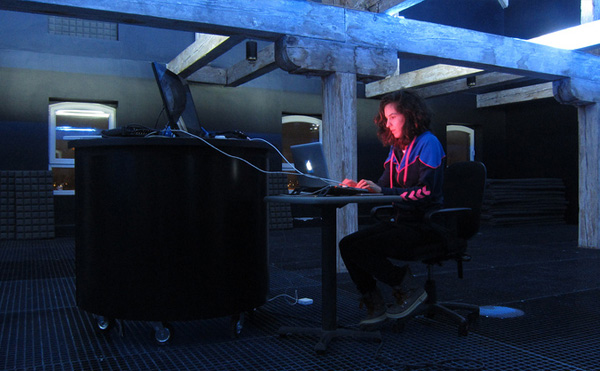In December 2016, Svetlana Maras was Artist-In-Residence at the Spatial Sound Institute, where she created two kinetic studies in 4DSOUND. The studies explore the relation between sound and mechanical movement. Elements of ‘clockwork’ mechanisms are interconnected dually - each sound has a corresponding movement, and all movements work simultaneously and interdependently to create a perpetual sound sculpture that manifests in space - almost tangibly. The sonification of certain trajectories triggers specific behaviours of the sound objects, and the listener is provided with multiple renditions of the work he or she can listen to. The music draws resemblance to the process-like pieces by the early minimalists of the 20th Century. The sculptural and kinetic aspects of the work indicate Maraš' affection for the works by Jean Tinguely and Pierre Bastien.
“It was my first encounter with the 4D system and rather than realising an already composed piece, I developed a work in dialogue with this system that I was getting to know. The resulting ’Two Kinetic Studies’ examine the laws of mechanical movement and corresponding spatial and sonic repercussions that emerge from it. Each of the two studies consists of up to eleven objects. Each object always has the same spatial movement and the same starting position but not all of them are being active all the time. There are several ‘modes’ of playing each piece - they could be defined (programmed) by me, but could be open to the listener to activate and choose among them. Each mode is a combination of elements in which the objects have their own specific (musical and spatial) behaviours. The repetitiveness and the interdependence between the objects resembles a clockwork mechanism. In the Study no.1, linear movement along the X-axis prevails (horizontal back and forth movement), while rotation is the dominant movement in the Study no.2.”
- from Svetlana Maraš: Composing in Sound
—
Links:
Two Kinetic Studies
Related:
 RTS (Serbian Nation Radio) 14.06.2017
RTS (Serbian Nation Radio) 14.06.2017
 Composing in 4DSOUND - Svetlana Maras (2017)
Composing in 4DSOUND - Svetlana Maras (2017)